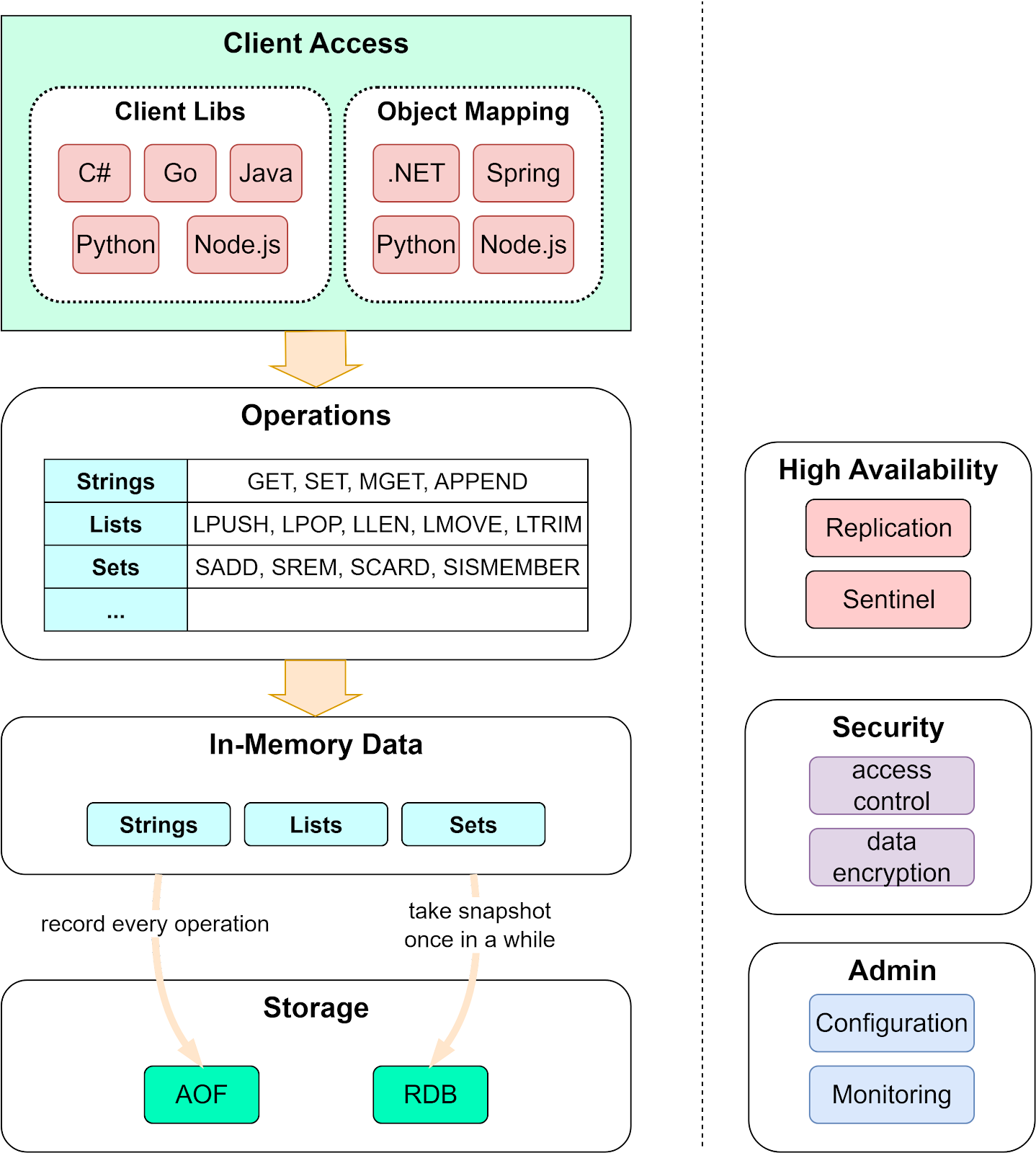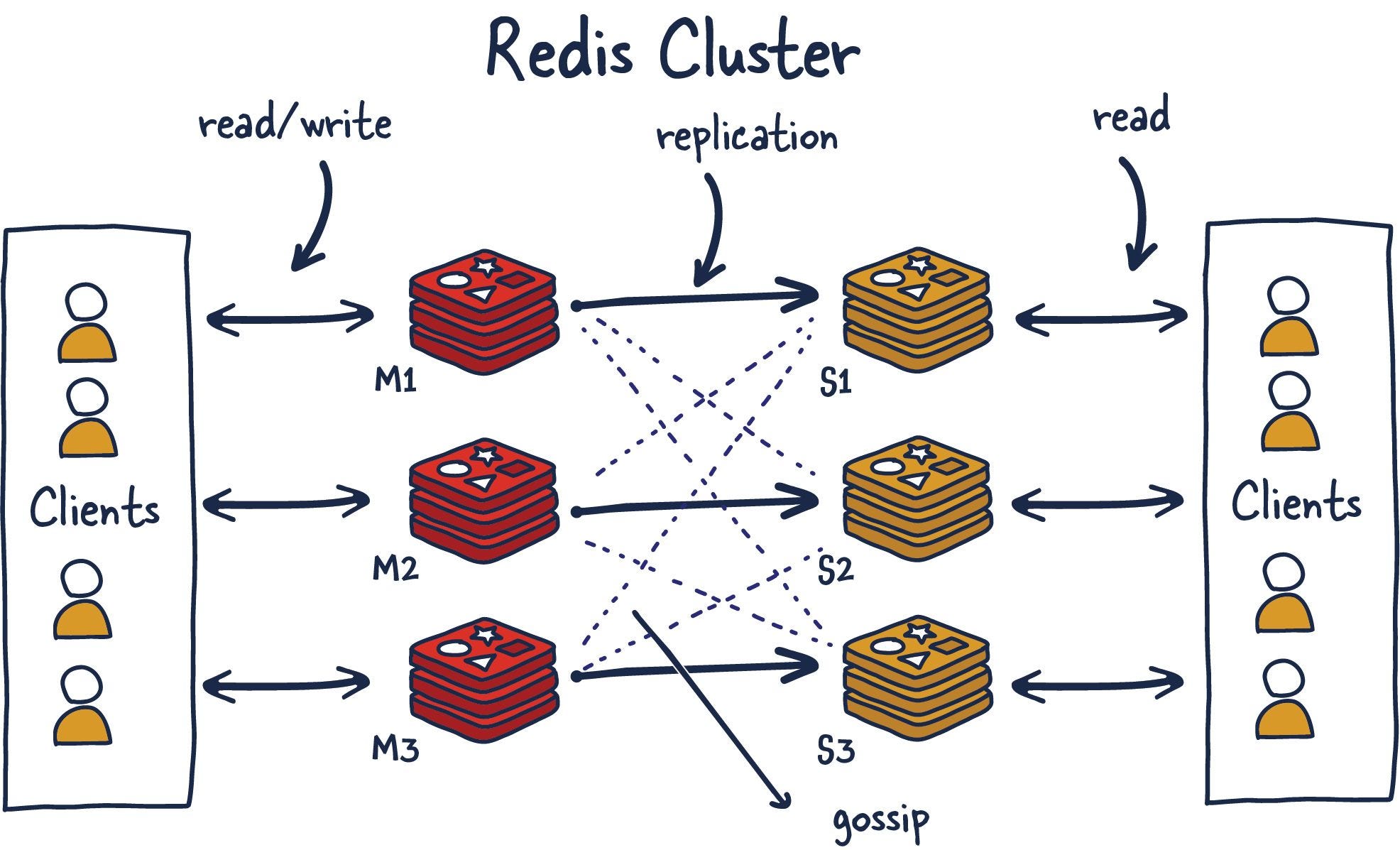Redis (Remote Dictionary Server) is an open-source, in-memory data structure store that has revolutionized how modern applications handle data. Unlike traditional databases that store data on disk, Redis keeps everything in RAM, delivering blazing-fast performance with sub-millisecond response times and the ability to process millions of operations per second. The official Redis introduction explains the fundamental architecture decisions that enable this performance, while the Redis University courses provide hands-on training for developers new to in-memory computing.
Core Architecture and Design
Redis employs a single-threaded architecture for command execution, which eliminates the complexity of lock management while ensuring data consistency. This design choice, combined with its in-memory storage approach, enables Redis to achieve performance levels that are 1,000-10,000 times faster than traditional disk-based databases. The Redis internals documentation provides detailed explanations of event loop processing, while antirez's blog posts (Redis creator) offer insights into the architectural decisions. For developers interested in the threading model evolution, the Redis 6 threading announcement explains how I/O threading was carefully introduced without breaking the single-threaded command execution guarantee.

The latest Redis 8 release introduces significant architectural improvements, including enhanced I/O threading that can deliver up to 112% improvement in throughput when configured with 8 threads on multi-core systems. The new implementation achieves up to 87% faster command latency and 2x more operations per second compared to previous versions. The Redis 8 performance analysis provides detailed benchmarking methodology, while the upgrade guide covers migration considerations. The Redis 8 changelog documents all performance optimizations and breaking changes.

Rich Data Structure Support
What sets Redis apart is its native support for complex data structures beyond simple key-value pairs. Redis 8 now includes eight core data structures: Strings, Lists, Sets, Hashes, Sorted Sets, JSON, Time Series, and Vector Sets (beta), plus five probabilistic structures including Bloom filters, Cuckoo filters, and Count-min sketch. The data structures tutorial provides interactive examples, while the Redis University data types course offers comprehensive training.

These data structures aren't just storage containers—they come with specialized operations optimized for performance. For example, sorted sets can handle leaderboard operations with O(log N) complexity, while HyperLogLog structures can estimate cardinality of massive datasets using only 12KB of memory regardless of the dataset size. The Redis commands reference provides detailed complexity analysis for each operation, while Redis patterns documentation shows real-world implementation examples. For performance-critical applications, the time complexity guide explains how to choose optimal data structures and operations.

Enterprise Adoption and Real-World Impact
Redis has achieved remarkable adoption across industries, with companies like Microsoft, Airbnb, and Amazon relying on it for mission-critical applications. The Redis customer stories showcase diverse use cases, from Netflix's caching architecture to GitHub's session management. In the financial sector, leading banks use Redis to achieve sub-millisecond latency for high-frequency trading and fraud detection, with some institutions reporting 40% reduction in fraudulent transactions due to enhanced real-time analytics capabilities. The financial services use cases document includes case studies from JPMorgan Chase and Goldman Sachs, while the FinTech Redis implementations explore modern trading platform architectures.
E-commerce platforms leveraging Redis typically see 20% increases in sales conversions due to faster page load times, while gaming companies report 40% higher player retention rates when using Redis for real-time leaderboards and matchmaking. The e-commerce use cases include implementations from Shopify, Wayfair, and Otto Group, demonstrating session store optimization and real-time personalization. Gaming industry examples include EA's player matching systems and Zynga's social game backends, while the real-time gaming architecture guide explains leaderboard implementation patterns. Additional performance studies can be found in the Redis Labs performance reports and benchmark comparisons.

These performance advantages and enterprise adoption patterns make Redis compelling, but choosing the right in-memory solution depends on your specific requirements. The next section compares Redis against alternatives like Memcached and Hazelcast to help you make the optimal choice for your architecture.